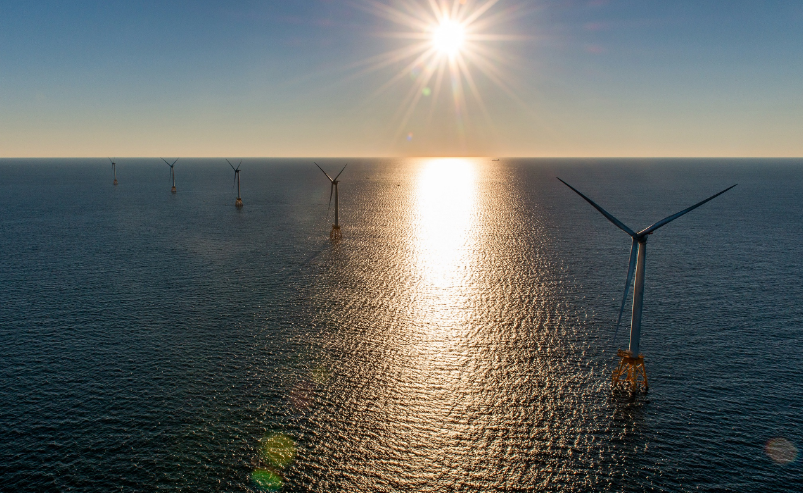My colleague Mary Skelton Roberts recently wrote about exciting opportunities influencing Barr’s efforts to reduce transportation-related emissions. In this piece, I offer my perspective on trends shaping the clean energy sector and informing our thinking about the most effective ways to focus this complementary facet of Barr’s Climate program.
I’ve previously compared reaching the region’s 2020 and 2050 climate goals to the difference between climbing Mount Washington (which is the highest peak in the northeast, at 6,288 feet) and climbing Mount Everest (the highest peak in the world, at 29,029 feet). While reaching the summit of either mountain is an accomplishment, there are major differences. On Mount Washington, the trails are well marked and the ascent is a matter of putting one foot in front of another—something nearly any determined novice could do on a sunny, summer day. Climbing Mount Everest, on the other hand, demands completely new thinking, skills, preparation, experience, and fortitude. As we have engaged in strategic planning for Barr’s Climate program in 2015, the summit of Mount Washington is in sight, and the urgency to shift attention to that Mount Everest of goals is even more apparent.
Over the last five years, Massachusetts and other northeastern states have demonstrated leadership, crafting clean energy policies that have spurred private-sector innovations and thousands of new jobs. They have been phasing out the dirtiest fuels, promoting efficiency, and regulating carbon through the Regional Greenhouse Gas Initiative. In the energy sector, we are trending to meet our 2020 emissions goals with a final push needed to get us there.
Yet, reaching the Mount Everest goal of 80% reductions in carbon emissions by 2050—what climate scientists say is necessary—will require a new generation of clean energy policies, massive increases in deployment of clean energy, deeper efficiencies, and modernization of our electricity grid. Decisions made today will determine whether we pull it off.
As we look across the energy landscape from the slopes of our metaphorical Mount Washington, there are a number of exciting trends that present opportunities for Barr to help the region in its climb, as well as some serious obstacles we must overcome.
1. Clean energy is growing faster than any other fuel source, and our energy policies need to catch up.
Renewable energy is rapidly gaining traction as costs are plummeting and quality keeps improving. According to the Federal Energy Regulatory Commission, renewable sources—biomass, geothermal, hydropower, solar, and wind—accounted for nearly 70% of new electrical generation placed in service in the U.S. during the first half of 2015. Renewable energy costs have decreased dramatically in recent years. For example, costs for solar installations in the U.S. fell by nearly 52% between 2009 and 2014. Deutsche Bank predicts that most of the world will experience “grid parity”—the point when renewables without subsidies are cheaper than fossil fuels—within a couple of years. Nationally, even though solar energy just reached the 1% mark of energy load, there are already more Americans working in the solar industry than in coal and gas. This is an incredibly exciting time, rich in opportunity to advance clean energy. Our energy policies, however, haven’t kept pace. They still favor investments in what increasingly looks like a dying industry—i.e., fossil fuels.
Equally promising are new technologies that allow consumers to reduce and control how much energy they use, like LED lights, smart thermostats, web-based monitors and controls, microgrids, and affordable batteries. Along with renewables, these technologies are beginning to transform the U.S. power sector. However, today’s energy grid, utilities, and the policies that govern them have not caught up with these disruptive technologies. The electric system we have today was developed over the past century as a centralized, hub-and-spoke model, with huge fossil fuel power plants and massive networks of wires.
For this region to realize the full potential of low- or no-carbon energy sources and grid innovations, the rules of the game must change. And we see a continuing role for Barr to play in advancing solutions in this space—including support for research and analysis, strategic communications, demonstration projects, convening, advocacy, and more, as we work in close partnership with others.
2. Cities continue to lead the way with carbon reductions.
While climate change is a global challenge, cities increasingly stand out as leaders in climate action. Cities are setting goals, creating plans, and holding themselves accountable to carbon emissions reductions. Boston, for example, now tops the American Council for an Energy-Efficient Economy’s Energy Efficiency Scorecard and is receiving recognition by global groups like the C40 Cities Climate Leadership Group, thanks in part to its city-wide Greenovate initiative. Likewise, the northeastern states have led on climate policy, creating the Regional Greenhouse Gas Initiative and pushing the legal challenge that culminated in the Supreme Court ruling that cleared the way for the Clean Power Plan, known as Massachusetts vs. EPA.
Helping cities advance efficiency and clean energy has been a focus of ours at Barr and, we believe, continues to present opportunities for impact. Cities consume two-thirds of the world’s energy and generate 70% of the world’s greenhouse gas emissions. In addition, they are home to more than half of the world’s people. By 2030, that percentage will swell to 60%.Cities and states are critical partners for climate action.
3. Knowledge-sharing networks are multiplying impact.
While we are proud of work and progress we’ve seen locally, we know that innovative climate solutions are also being created and taking root in cities all over the world, and we have much to learn—even as we seek to share what we’ve learned from our experience. Through its participation in national and global networks, like the Urban Sustainability Directors Network, C40 Cities Climate Leadership Group, and Carbon Neutral Cities Alliance, Boston has been able to learn from and contribute to global leadership in climate action. Barr has been pleased to support and engage with these sorts of knowledge-sharing networks. And we expect to continue doing so. For example, with the recent advent of the Clean Power Plan, there is a terrific opportunity for states outside our region to benefit from the experience and perspective of participants in the highly successful Regional Greenhouse Gas Initiative.
4. New, powerful voices are taking up the climate challenge.
What began as an environmental movement has gone mainstream. Last year, the People’s Climate March brought out more than 300,000 people from all walks of life to demand action on climate change.
Earlier this year, after issuing his encyclical on climate change, “Our Common Home,” Pope Francis gathered the largest-ever group of city mayors to the Vatican to discuss climate change and to sign a declaration committing to significantly reduce climate pollution. Last month, the White House announced that 81 U.S. companies signed the American Business Act on Climate Pledge to demonstrate their support for action on climate change and support for a strong agreement at the Conference of Parties in Paris.
We know this diverse mix of nonprofit, public, and private voices is critical to move climate action forward at the global, national, and local levels. Over the past five years, Barr has partnered with a number of organizations to advance clean energy, ranging from the grassroots-led Green Justice Coalition, to the business-led Green Ribbon Commission, to the government-led Urban Sustainability Directors Network. Through peer learning networks and technical assistance, we have supported initiatives to cultivate and build leadership on clean energy across these different sectors.
We have been inspired with the tremendous commitment and tangible results of all these efforts. Institutions and businesses that engaged in energy efficiency became more willing to participate and weigh in on policy issues at the state and city level, and ended up being credible, persuasive messengers. For example, last week, Robert Armstrong of the MIT Energy Initiative (MIT is a member of the Green Ribbon Commission) authored an article for the Christian Science Monitor calling for universities and industry to work together to address climate change. In addition, the Green Ribbon Commission recently created a Renewable Energy Leadership Prize to inspire our region’s largest energy consumers to implement renewable energy procurement strategies at scale. Groups are gaining momentum and drawing more voices to the table. Barr will concentrate on building this momentum and promoting leadership in climate action across sectors.
Our region has taken significant strides over the last five years to reduce carbon emissions. However, it is clear there is a steep climb ahead in order to meet our goals for 2050. We must take these trends into consideration, adapt our thinking, and build on past successes from within the region as well as those shared from other parts of the globe. We are prepared and excited to help our many partners collectively take up the challenge and to map out a route to that daunting, but achievable, summit.




